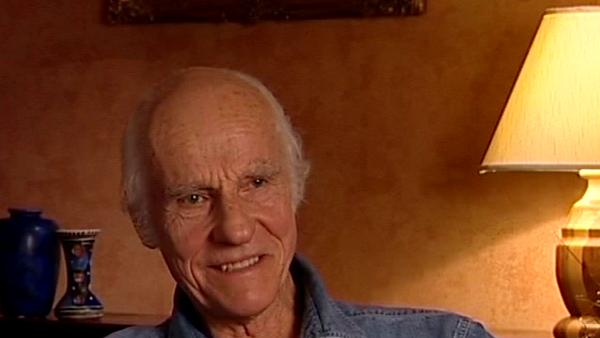But it was a good picture to shoot because we had some wonderful locations and I pursued this idea of having a rich contrast because it… it was like a culture clash and that you had the dark figure… he was always in black, Sean Connery, he was always… like he was the dark Eastern presence and Candy Bergen was always in white and off-white, and she was the Westerner and there… it’s this culture clash of what their values were and, of course, in the end she gets rescued and everything's fine, but not before a lot of bloodshed. That's a bit of a contrast isn't it? The white and the black. Yes, yes it was, but it… it worked out, it worked out okay. And I decided on that picture to go back to a hard key light, because I thought it was more appropriate... light designed... especially… there were a lot of scenes supposedly in Washington that we did in Madrid with senators and people like that, dressed in black, and I… I thought that a… a hard chiselled light — sharp light — was much more suitable to that... to the atmosphere. I still used a bit of soft filler so that I didn't get any double shadows, but all my key lights were hard, and it worked out all right. It was... it was, I think, the best way to go for that subject. And, again, it was anamorphic so we had the big wide screen, big negative... it was released in 70mm, wonderful score by Jerry Goldsmith and, you know, it was... it was a good boy's own adventure.
And Candice was young enough to take the hard light? Candy...? Candice. Sorry? Candice Bergen was young enough to take the hard light? Oh yes, well she was only... she was only about 21 when we did The Magus and this was about... this was about seven or eight years later. She was still under 30, and she's a wonderful horsewoman, marvellous rider, much better than Sean. He could ride but she was superb. As, there was so much on horses, on horseback... and I got on... Milius, John Milius, he's quite a... well, he's a very macho guy and, as I say, it's... it’s the weaponry that matters the most and he said to me at the beginning of the picture; he said ‘I don't want any close-ups in this picture’. He said ’We don't want to go too close’. And he kept to that; we nev... there were no really big close-ups. And the... he only looked through the camera once and that was when Brian Keith, who plays Roosevelt, was holding a rifle up and he was... he was about to shoot, and he just wanted to look through to make sure he was holding the gun properly. Otherwise, he'd come onto the set and just describe what he wanted, and he... he was a very good action director. You know, he'd say, ’Oh these are going to come in here; the other guys are going to come here; and this is going to happen here and the guns going to fire’... and... and he just described it to us all, with the first assistant and my camera operator, David, was with me, and then he'd walk away and let us set it up, and didn't look through the camera and we didn't have video assist. And so you had a lot of freedom. You know, you really felt, well, this is it; we do what... what we think best, and of course we got the dailies back and... and he liked what he saw. So it... it was very easy in that respect.






